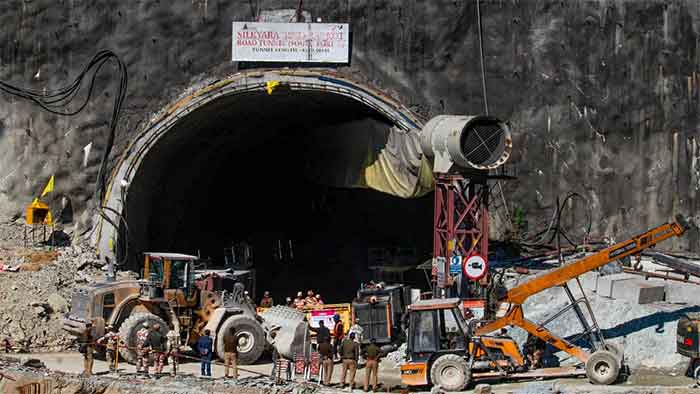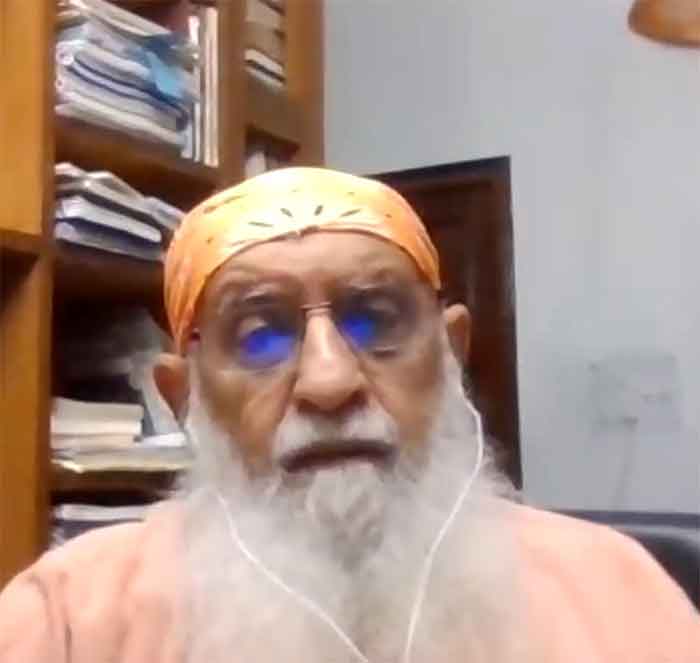Interview with Dr. Ravi Chopra: Unmasking the Environmental Toll of the Char Dham Project

On the festive day of Diwali, while the nation reveled in celebrations, 41 laborers found themselves teetering between life and death within the depths of the Silkyara Tunnel in Uttarkashi, Uttarakhand. This tunnel, part of the controversial Char Dham project, had suddenly collapsed. Despite ongoing efforts by various government agencies, the trapped workers awaited rescue for over 12 agonizing days. The Char Dham project, embroiled in controversies since its inception, involves the construction of approximately 1000 tunnels in Uttarakhand for roads, water projects, and railway lines.
To shed light on the environmental repercussions of the Char Dham Project, we engaged in a thought-provoking conversation with Dr. Ravi Chopra, an eminent environmentalist. Dr. Chopra, who chaired the High Power Committee overseeing the Uttarakhand Chardham Road Widening Project, expressed grave concerns about the widening of highways, emphasizing its perilous implications for the fragile mountain ecosystem. His rich background as a research scientist at the People’s Science Institute and extensive experience spanning four decades in development issues underscored the weight of his insights.

Challenges Unveiled: Balancing Faith and Ecology
Dr. Chopra dissected the nexus between the government’s push for easier access to Char Dhams and the mounting pressure on these sacred sites. His articulate analysis exposed the paradox between religious sentiments and the actual motivations driving the extensive infrastructural developments. He underscored that what purportedly seemed like measures to preserve religious faith were, in reality, geared towards fostering tourism and increasing government revenue. The shadow of environmental degradation cast by these initiatives was, according to Dr. Chopra, alarmingly extensive, affecting not only the temple areas but the entire river valley.
As the conversation delved deeper, Dr. Chopra outlined the intricate web of consequences woven by widening roads. The ominous layer of carbon settling on glaciers, hastening their meltdown, emerged as a stark reality. The widening roads not only disrupted the natural balance but also created new landslide-prone areas. The depletion of forests heightened the risk of human-wildlife conflicts, marking a poignant narrative of unintended consequences.
Unveiling Disputes and Resignation: The Battle for Sustainable Development
Dr. Chopra’s resignation from the Supreme Court High Power Committee revealed an underlying conflict. The heart of the matter lay in the disagreement over the width of the roads. While the government insisted on a 10-meter width, Dr. Chopra and the committee advocated for a narrower 5.5-meter width, grounded in the recommendations of the Road and Transport Ministry’s committee. The tension between ecological prudence and revenue considerations came to the forefront, with suspicions of toll tax revenue serving as a driving force behind the unwarranted road width.
Despite the government’s purported justifications related to national security and swift military mobilization, Dr. Chopra highlighted the Defense Ministry’s acknowledgment that a 7-meter width sufficed for their needs. The unsettling revelation about toll tax checkpoints being erected further pointed to the potential economic motivations overshadowing environmental concerns.
Rising Dams, Falling Valleys: A Cascade of Environmental Perils
The discussion shifted to the proliferation of dams in Uttarakhand, with Dr. Chopra shedding light on the looming dangers. Drawing from his extensive research post the Kedarnath disaster of 2013, he exposed the vulnerability of dams in the paraglacial zone. The unsettling narrative of dams collapsing under the pressure of accumulated debris raised questions about the wisdom of continuing such projects.
As the interview progressed, Dr. Chopra narrated the aftermath of his committee’s recommendations following the Kedarnath disaster. The call to dismantle 23 hydropower projects, perceived as catalysts for the tragedy, was met with partial acceptance by the Central Government. The tug of war between development aspirations and environmental conservation played out, leaving a trail of uncertainties.
Sacrifices for Ganga: Unanswered Calls for Environmental Integrity
The conversation took a poignant turn as Dr. Chopra reflected on the sacrifices made by environmental activists. The memory of Prof. GD Aggarwal, who fasted for 112 days to safeguard the uninterrupted flow of the Ganga, lingered. The government’s tepid response to his demands and the subsequent lack of tangible environmental improvements painted a somber picture. Dr. Chopra questioned the ethical and moral impact of such sacrifices on the government’s decisions, highlighting the shifting sands of political will.
As we concluded the interview, Dr. Chopra drew attention to the environmental predicament faced by regions like Joshimath. The delicate balance between religious beliefs and ecological realities, exemplified by the merging mountains of Jai Vijay, pointed towards an impending crisis. The unchecked surge in population, coupled with developmental initiatives, set the stage for potential calamities. Dr. Chopra’s final cautionary words echoed the urgency for sustainable practices, emphasizing that nature, if exploited recklessly, would inevitably retaliate.
In unraveling the layers of the Char Dham project and its environmental ramifications, Dr. Ravi Chopra’s insights served as a clarion call for introspection and responsible development. The interview unveiled not just the challenges but also the pressing need for a paradigm shift towards ecologically sustainable practices in the pursuit of progress.
About The Author:
Aman Namra, a seasoned Development Journalist with a remarkable three-decade career, has made significant contributions in the field. As the Incharge and Resident Editor of the prominent National Development Communication Network “Charkha,” headquartered in Delhi, Aman has played a pivotal role in advancing the organization’s mission. Notably, “Charkha” was established by the renowned social worker Sanjoy Ghose, whose life was tragically cut short by Ulfa Extremists.
Aman’s commitment to fostering knowledge and awareness extends beyond the editorial desk. He has conducted approximately 50 media workshops across multiple states, including Madhya Pradesh, Chhattisgarh, Bihar, Jharkhand, Rajasthan, Uttarakhand, Mizoram, and Uttar Pradesh. These workshops have engaged journalists, social activists, and thought leaders, reinforcing the importance of Development Journalism.
Recognized as an authority in the field, Aman has been invited to share his insights on Development Journalism at prestigious institutions such as the Indian Institute of Mass Communication, Lady Irwin College in Delhi, and Makhan Lal National University in Bhopal. His expertise and experiences are highly regarded in academic circles.
Aman’s influence extends to the realm of the written word. He has penned over 100 articles covering a diverse range of topics, which have been published in various newspapers and magazines. His literary accomplishments include the authorship of two books on traditional water harvesting, both published by esteemed institutions, the National Book Trust and the National Foundation of India in Delhi.
Aman’s commitment to knowledge exchange and cross-border understanding is exemplified by his selection as a South Asia Media Exchange Fellow. During his fellowship, he conducted research in Nepal, focusing on traditional water harvesting and natural foresting systems, thereby contributing to regional knowledge and sustainable practices.
Today, Aman continues to shape the media landscape as the Executive Editor of Digital Media at Dainik Bhaskar, headquartered in Bhopal. His extensive experience and unwavering dedication to Development Journalism continue to leave a lasting impact on the industry.












































